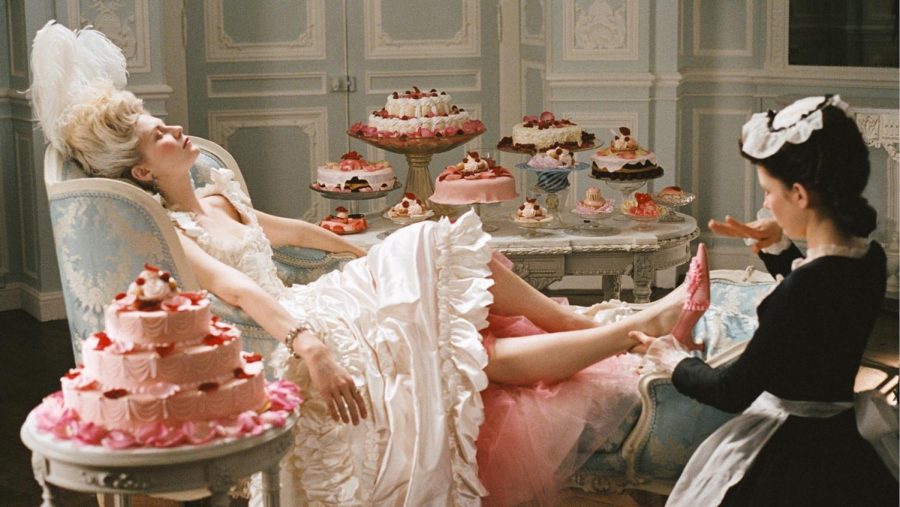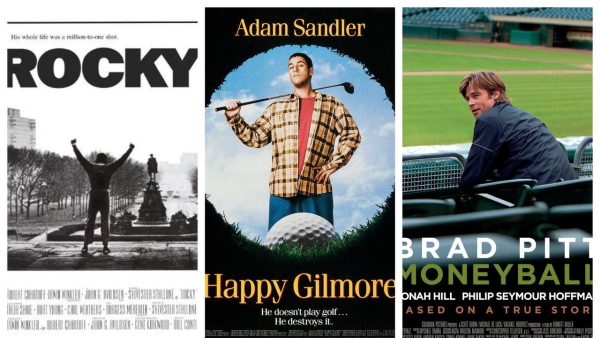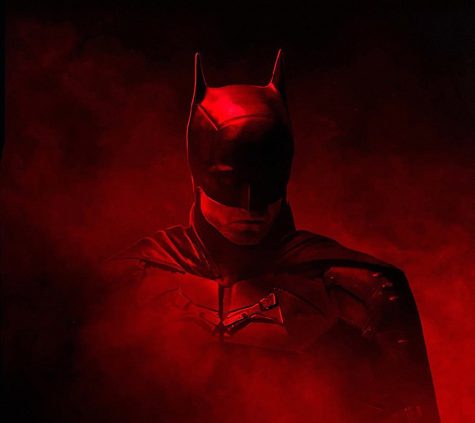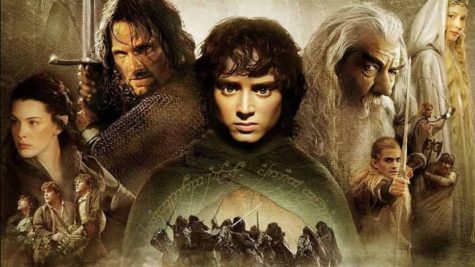The Masterpiece that is Sofia Coppola’s Marie Antoinette
She never said “Let them eat cake”!!
Marie Antoinette (2006) received a very mixed reception from both the French and Americans in attendance at the Cannes Festival. In portraying the life of Marie Antoinette, Sofia Coppola made her own artistic decisions that painted the former queen in a positive light. Instead of highlighting her faults, Coppola showed how Marie was only fourteen when she was thrust into the French court. Then, while the movie follows a rough and minimal plot line, the movie is more about an aesthetic or raw emotions instead. By the end of the movie, Marie Antoinette has been humanized so well that it’s truly hard to remember that she ever did anything wrong.
The basic plot follows Marie Antoinette from her home of Austria to France, where she is entering into an arranged marriage with Louis XVI. 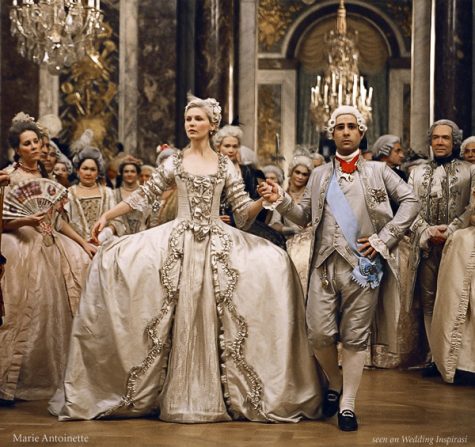 She was first met with coldness from the other members of the French court, and her husband was a bit odd and never really spoke to her. Slowly, she began to make new friends, especially with the Duchesse de Polignac, who could be seen as a bad influence. Continually grappling with the shame of not producing an heir, Marie Antoinette falls into a cycle of ridiculous spending, gambling, and partying. She does later successfully have a few children, and she also has an affair with a Swedish soldier, both of which bring her the joy that she was seeking in her earlier years. However, beneath the positive exterior of the bright film, background noise or small comments remind viewers of the unhappiness of the people and the revolution on the horizon.
She was first met with coldness from the other members of the French court, and her husband was a bit odd and never really spoke to her. Slowly, she began to make new friends, especially with the Duchesse de Polignac, who could be seen as a bad influence. Continually grappling with the shame of not producing an heir, Marie Antoinette falls into a cycle of ridiculous spending, gambling, and partying. She does later successfully have a few children, and she also has an affair with a Swedish soldier, both of which bring her the joy that she was seeking in her earlier years. However, beneath the positive exterior of the bright film, background noise or small comments remind viewers of the unhappiness of the people and the revolution on the horizon.
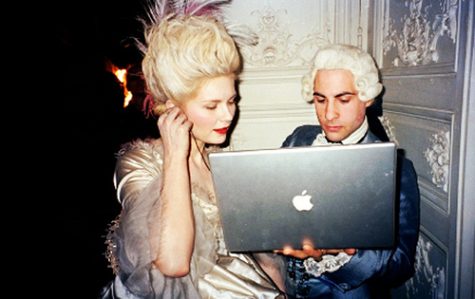
With little dialogue, viewers look more to other aspects of the film. For example, the score which immediately throws historical viewers into a fit. Rather than classical music of the appropriate time period, Coppola utilized alt rock music from artists like Bow Wow Wow, The Strokes, or New Order. For example, in a ballroom dancing scene, “Hong Kong Garden” perfectly juxtaposes with the Rococo fashion and strict guidelines, showing how Marie, played by Kirsten Dunst, is truly still a child that is looking to have fun.
In addition to the score, the visual aspects of the film have brought it to popularity. 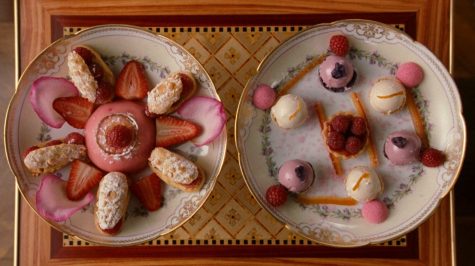 Filmed in Versailles, the lavishness of French life in the 18th century is incredibly heightened. The film’s saturation and color are also incredibly played up, further cementing that Marie was still a young girl when she viewed the world around her. Many shots of the movie included none of the leads, but rather the delicacies, shoes, or ornate structures within Versailles. One of the most notable scenes included a montage of Marie Antoinette drowning her social exile in a wide assortment of clothes. Bright 1700s-styled shoes are being thrown in a heap when for a few quick seconds, a pair of bright converse appears.
Filmed in Versailles, the lavishness of French life in the 18th century is incredibly heightened. The film’s saturation and color are also incredibly played up, further cementing that Marie was still a young girl when she viewed the world around her. Many shots of the movie included none of the leads, but rather the delicacies, shoes, or ornate structures within Versailles. One of the most notable scenes included a montage of Marie Antoinette drowning her social exile in a wide assortment of clothes. Bright 1700s-styled shoes are being thrown in a heap when for a few quick seconds, a pair of bright converse appears.
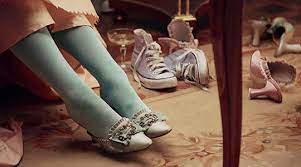
These modern shoes were no mistake, Coppola continued to use her own artistic flair to reinforce how similar Marie was to teenagers of our time period. Additionally, although the revolution is not mentioned until the very end of the movie, the final scene shows Marie’s room trashed, with sounds of fighting in the background and then silence. This stark end to an otherwise bubbly movie brings viewers back to the reality of the history that occurred.
Finally, the film can’t be properly analyzed without a discussion of the actors. Kirsten Dunst, who previously worked with Coppola, took on her role well. Dunst perfectly showcased the many emotions and stages that Marie underwent, with pivotal scenes showing her sobbing against a door after a tirade of bad comments from the court. Rose Byrne also makes an appearance as a duchesse, and Jason Schwartzman stars opposite Dunst as Louis XVI, who comically was shorter than her. Costume design for all of the characters, while brightly colored, was still somewhat accurate. Large ball gowns, tall hair styles, and pointy little shoes are dressed upon every single person that stepped on set. Given the large amount of background actors, the costume and makeup department was certainly working overtime.
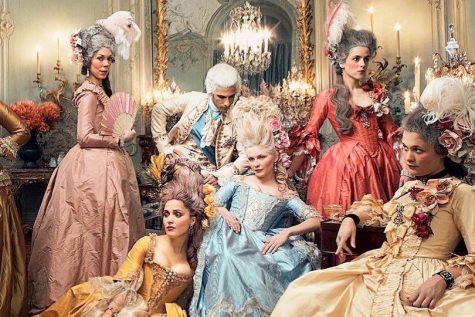
I first watched this movie a few years ago, and every few months I rewatch it, paying perfect attention to notice new details and appreciate it once more. It was while rewatching this movie in August that I decided to write my college personal statement about Marie Antoinette in general. So, while I was unfazed by other classics like The Godfather or Good Will Hunting, I can attest that this surface level movie truly did change my life. Don’t take my word for it? Letterboxd viewers have said: “Let the art department eat ALL the cake,” “When style over substance is substance. How does does Kirsten Dunst’s performance get better with every watch..,” and “I was thrilled to learn Marie Antoinette was a fan of the Strokes.”




